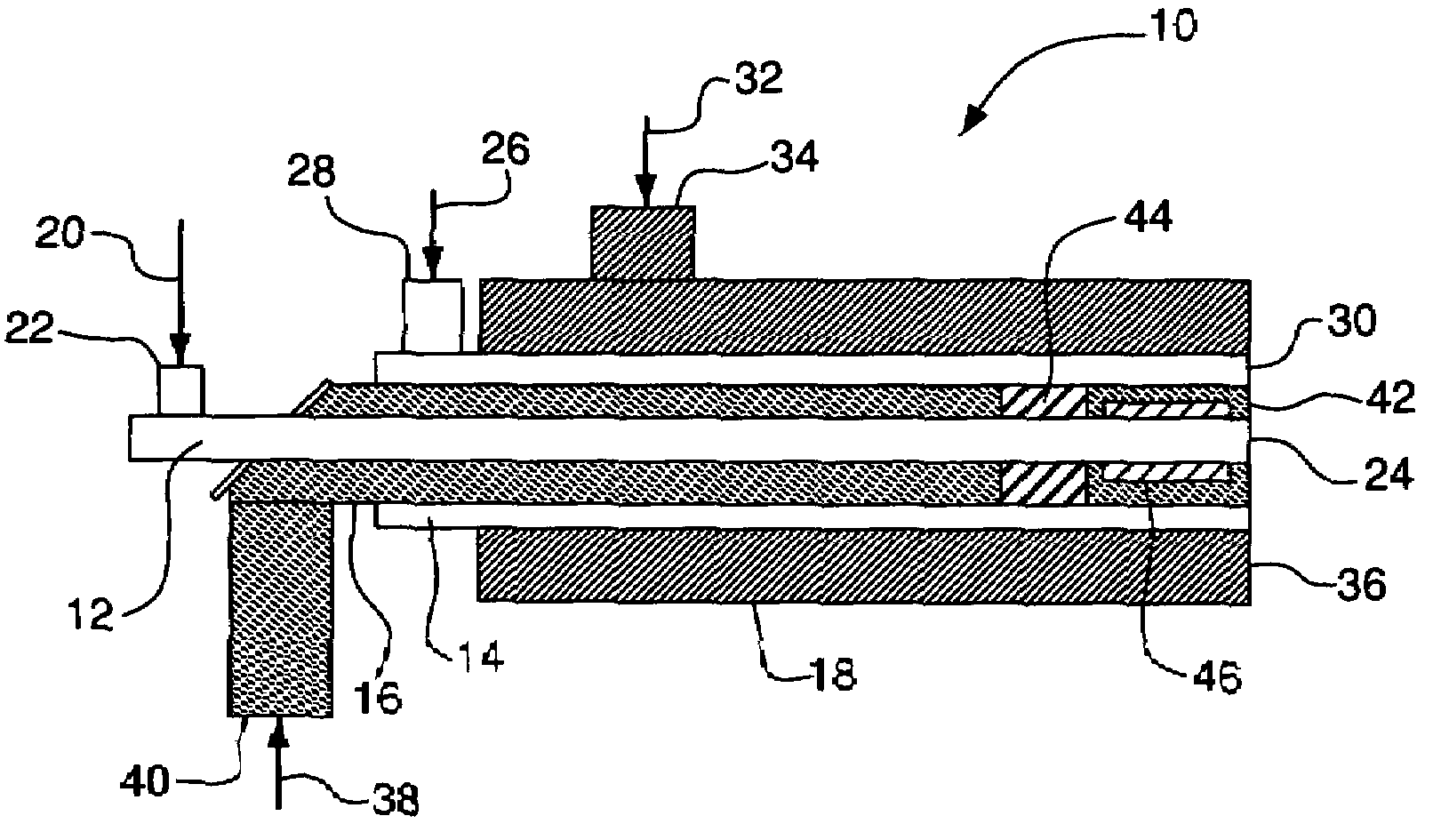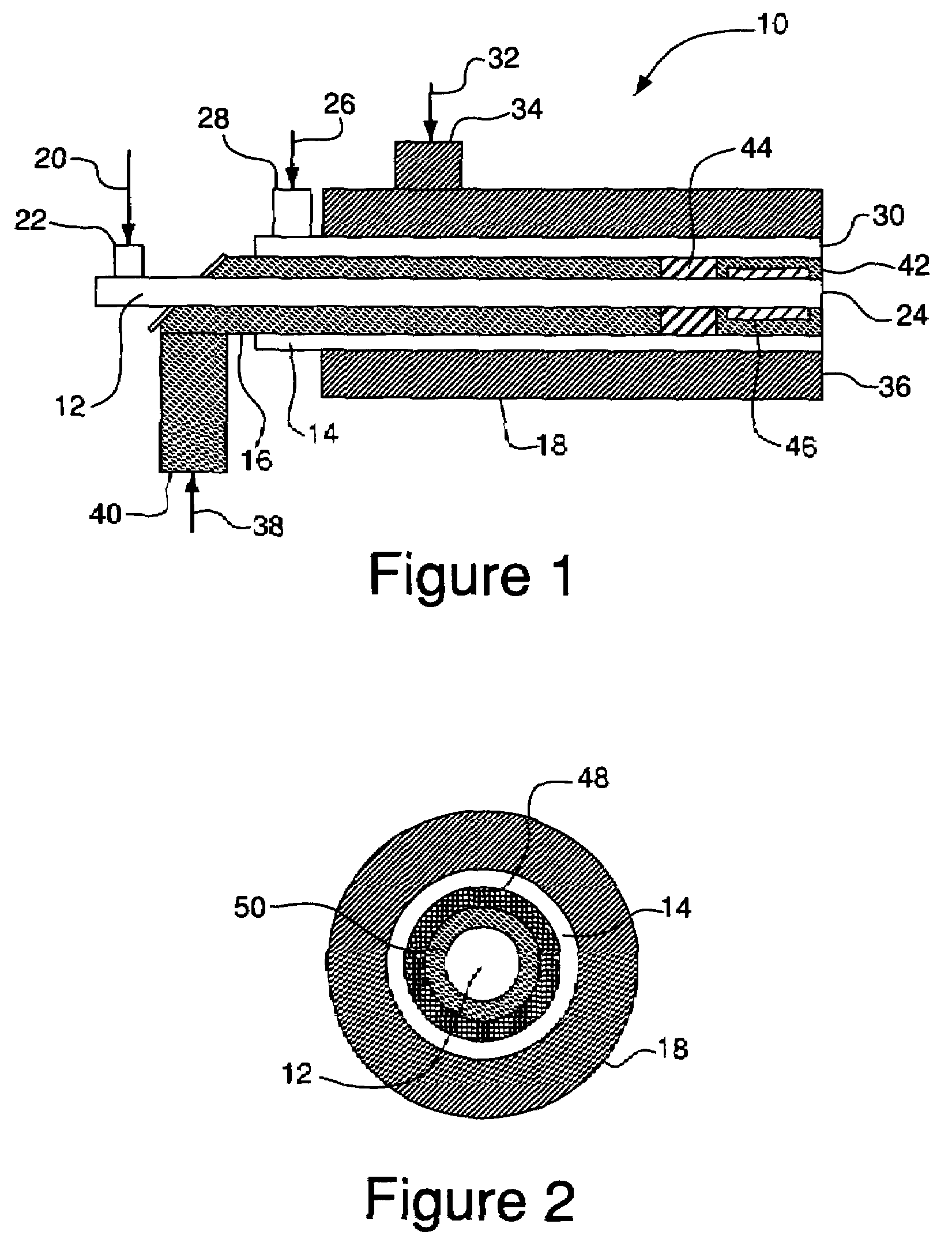Pulverized solid fuel burner
a solid fuel burner and burner technology, applied in the field of pulverized solid fuel burners, can solve the problems of increasing the firing rate, not being satisfactorily addressed, and reducing the axial momentum of the burner flame,
- Summary
- Abstract
- Description
- Claims
- Application Information
AI Technical Summary
Benefits of technology
Problems solved by technology
Method used
Image
Examples
Embodiment Construction
[0055]The invention includes burners and a methods for combusting a solid fuel with an oxidant. As used herein, the term “solid fuel” refers to any solid fuel suitable for combustion purposes. Although the invention is discussed in the context of a pulverized coal burner, various types of coal and other solid fuels may be used with the burners and methods of the present invention.
[0056]For example, the invention may be used with many types of carbonaceous fuels, including but not limited to: anthracite, bituminous, sub-bituminous, and lignitic coals; tar; bitumen; petroleum coke; paper mill sludge solids and sewage sludge solids; wood; peat; grass; and combinations and mixtures of all of those fuels.
[0057]As used herein, the term “oxidant” refers to oxygen, oxygen-enriched air, or any other suitable oxidant with an oxygen concentration greater than about 21% by volume. One possible oxidant is commercially pure oxygen generated by a cryogenic air separation plant, a membrane or an ad...
PUM
 Login to View More
Login to View More Abstract
Description
Claims
Application Information
 Login to View More
Login to View More - R&D
- Intellectual Property
- Life Sciences
- Materials
- Tech Scout
- Unparalleled Data Quality
- Higher Quality Content
- 60% Fewer Hallucinations
Browse by: Latest US Patents, China's latest patents, Technical Efficacy Thesaurus, Application Domain, Technology Topic, Popular Technical Reports.
© 2025 PatSnap. All rights reserved.Legal|Privacy policy|Modern Slavery Act Transparency Statement|Sitemap|About US| Contact US: help@patsnap.com



